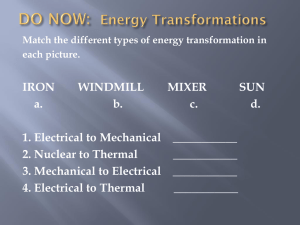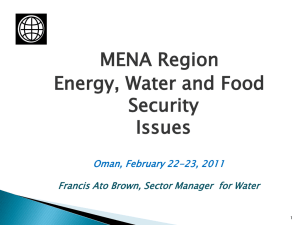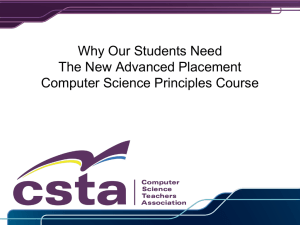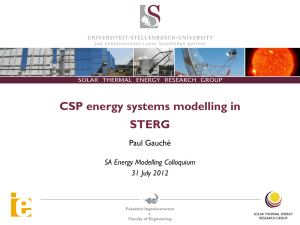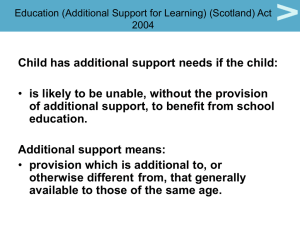Slides
advertisement
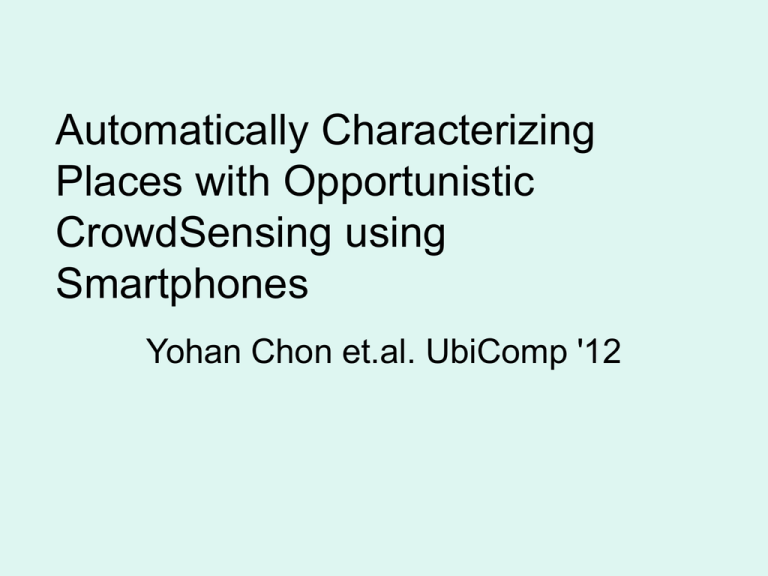
Automatically Characterizing Places with Opportunistic CrowdSensing using Smartphones Yohan Chon et.al. UbiComp '12 CrowdSense@Place(CSP) • A framework that exploits a previously untapped resource – opportunistically captured images and audio clips from smartphones – to link place visits with place categories (e.g., store, restaurant). • CSP combines signals based on location and user trajectories (using WiFi/GPS) along with various visual and audio place “hints” mined from opportunistic sensor data. Why CSP? • Awareness of user location underpins many popular and emerging mobile applications, including local search, point-of-interest recommendation services, navigation, and geo-tagging for photographs and tweets. • If we can automatically characterize places by linking them with attributes, such as place categories (e.g., “clothing store,” “gym”) or likely associated user activities (e.g., “eating,” “work”), we can realize powerful locationand context-based scenarios. • Not always possible to accurately know which place a user is based purely on the location estimate. Overview • CSP relies on opportunistically collected images and audio clips crowdsourced from smartphone users. • CSP users install smartphone application that exploits intermittent opportunities throughout the day to sample microphone and camera. • CSP extracts hints from the environment using a variety of image and audio based classifiers. • The output from these classifiers are merged with location based signals from WiFi and GPS sensors to segment user trajectories into separate place visits. • Place characteristics are learnt using topic-models. • Topics learned from the model correspond approximately to a place category, with individ-ual places represented as a weighted combination of place categories. • Automatically characterize previously unseen places by inferring the topic distribution for the new place and assign category based on dominant topic. Leveraging rich visual and acoustic place hints • Different places, such as restaurants, stores, homes, and workplaces often contain a variety of visual and acoustic clues that allow people to intuitively understand a surprising amount about a location, even if they have never been there before. • Images are frequently blurry or capture unhelpful scenes • audio clips frequently contain too much background noise to be intelligle or simply capture silence. • CSP currently overcomes this problem with simple brute force: users collectively capture large volumes of both image and audio data daily and repeatedly visit places that are important to them Crowdsense@place • CSP is split between two software components – a smartphone application – offline server-side processing of collected data. • The smartphone application operates as a background service that – recognizes places using radio fingerprinting of nearby wi-fi access points – opportunistically captures captures images and audio clips at this location • Based on hints about place category mined from this collected data, and combined with data collected by other users, CSP can automatically determine the type of place (e.g., restaurant) without user intervention Smartphone client • CSP client performs the following functions– place segmentation using Wifi fingerprints and GPS – opportunistic crowd sensing which gathers image and audio sensor data – privacy configuration • Place segmntation – smartphone client regularly performs wifi scans to identify nearby Wifi access points. – If a Wifi fingerprint is encountered that is unlike those previouly seen, a new place is assumed to have been discovered. • Sensor sampling – sampling occurs after a small random delay once the user starts an application or uses an important phone function – Data quality is highly variable and often poor – client maintains a coarse sampling budget of a fixed number of images and audio clips that is reset during prolonged periods of charging • Privacy – All data is forced to reside on the smartphone for at least 24 hours, during which time, users can delete any data they are uncomfortable with CSP using. – Users can also pause data collection for an upcoming time interval if they anticipate sensitive events occuring. Sensor data classifiers • Optical Character recognition – mine written text found in posters or signs • Indoor scene classification – extract GIST features from training image – images are clustered using k-means clustering based on these features – On receiving a new image determine how close an image is to each cluster after the features are extracted • Object recognition – recognize variety of everyday objects observed withn places – CSP adopts examplar-svm approach • Speech recognition – capture place hints found in conversation of people • Sound classification – recognize simple acoustic events that occur in background Place modeling • Data Pre-processing – CSP builds documents, one for each distinct place a user visits – All data collected at a particular place is mined to extract a series of terms, which can then be assigned to a document associated with that place – Terms come in two varieties • Classifier terms • Mobility terms • Place categorization – CSP employs Labeled Latent Dirichlet Allocation(LLDA) to categorize places using the documents and terms generated from the crowd-sourced data. – A separate L-LDA model is trained for each place category and can be used to infer the category of new, previouly unseen places. L-LDA Evaluation • Multi-country deployment using Android smartphones that include 1241 distinct places • 36 users living in five locations around the world – 22% images are blurred or completely black • Metrics – Accuracy – distribution of place category topics. accuraccy=# of correctly recognized places/# of places • Baselines – GPS • Foursquare search API – Mobility • Similar to CSP but topics are built using only user trajectory information • Parameters and implementation – crowd sensing client using Android SDK 1.5 – wifi scanning intervals are 10 seconds – CSP backend is implemented in Microsoft Azure Place categorization Limitations and future work • Finer place categorization • Privacy • Activity vs Place category Thank you!!

